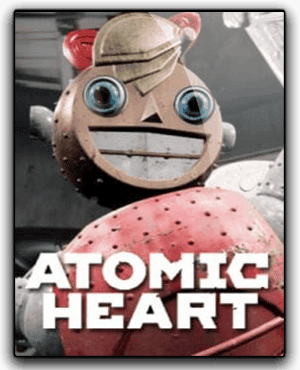

Annoyingly, one enemy type can only be damaged by melee weapons yet can bounce around more than a toddler on a spacehopper, making the fights a frustrating war of attrition.ĭue to the issues of melee combat, you’ll likely find yourself falling back on ranged weapons to slaughter your way through the animatronic hordes.

It falls apart in larger engagements where it’s exceptionally easy to get stun-locked, caught in an unescapable corner or against enemies with more agility.

Melee combat can feel satisfying sometimes as you smash into metal and steel. Additionally, your handy left arm glove, Char-les, has various abilities that can be used in battle, from freezing or electrocuting enemies to putting up a shield or levitating whole groups with mass telekinesis. P-3 can acquire and build up to 12 different weapons of three main types: regular firearms (pistols, rifles), special weapons (bazooka, energy rifles) and melee equipment. The reality is a hodge-podge reaction of all 3 of those philosophies. More recently, the bombastic, combat-heavy trailers alluded to a frenetic shooter design, along the lines of Wolfenstein or Doom. With the introduction of the glove and various weapons, it started to take on a BioShock feel.
#ATOMIC HEART WEAPONS ANDROID#
The original trailer suggested a more stealth orientated, slightly horror-themed adventure, akin to the android sequences in Alien: Isolation. Khrush(chev) ThemĪtomic Heart’s core systems are equally as split as the atoms fired into the Hadron Collider. P-3, to his minor credit, does go through some development, but despite it’s name, Atomic Heart is disappointingly lacking in cardiovascular ties. While it’s by the numbers and predictable, there is at least a cohesive story present. My favourite incursions of story were usually through the computer logs and pocketwatch audio clips, which flesh out more of the world itself than the supposedly urgent current story. Your charismatic glove Char-les can deliver the odd quippy bit of humour, but so much of the story fails to really take advantage of the amazing worldbuilding. There are some interesting plot-threads at the start but they feel under-utilised. The primary cast are predictable and the larger threads that unfold are so clearly signposted before the supposed reveals they might as well have a nuclear-powered neon sign above them. P-3 as a character is largely superficial and falls into the usual jarhead soldier trope. Like a lavishly decorated but horrifically underbaked and grossly-tasting cake, Atomic Heart’s narrative is bland to digest. Massive props needs to go to the concept artists and graphic designers at Mundfish for realising this vision so effectively. Everything about this world looks and feels enticing, beautiful and disquieting all at once. Strolling through Atomic Heart’s landscapes, stopping to take in the skyboxes and venturing into its underground complexes felt supremely compelling. Grandiose structures litter the map and the mix of futuristic sci-fi with grounded realism is fantastically realised. The architectural layout of buildings fits the 1950s superbly while conjoining this with the social uptick of the newly acquired advancements. Starting with the good, Atomic Heart’s sense of place and the depiction of this technologically revolutionised Russia is stunning. Naturally, the launch goes as smoothly as a gruffly spoken “niet”, with the robots being controlled by the system now acting hostile, attacking any and all humans within their vicinity. Now if you know your history, you’ll instantly recognise that the Russian government, as well as those of basically every other nation, may have some skepticism about this. Kollective 2.0 is launching, aiming to transfer all activity into a single hivemind that will embrace not just Russian peoples, but everyone across the globe. With further advancement merely days away from launch, you’ll get to bask in the glistening aura of this new-found Soviet utopia. Our character, Agent P-3, is a former military man now under the direct order of the head of the system. Atomic Heart opens with a parade of epic proportions as swathes of robotic technological advancement is boastfully displayed. Transport, agriculture, weaponry and technology alike have been advanced at almost inconceivable speed. Following the Great War, the Soviet Union gathered up the greatest scientific minds and discovered Neuro-Polymers, a massive breakthrough in technology across almost all sectors of life. Atomic Heart takes place in 1955, only not the 1955 as we’ve been taught in schools.


 0 kommentar(er)
0 kommentar(er)
